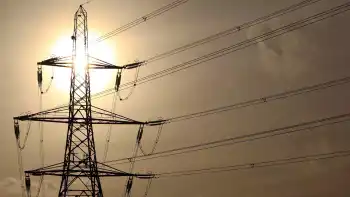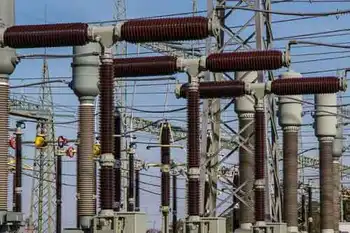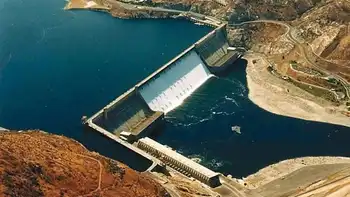Utilities also look to wind
By Omaha World-Herald
Electrical Testing & Commissioning of Power Systems
Our customized live online or in‑person group training can be delivered to your staff at your location.

- Live Online
- 12 hours Instructor-led
- Group Training Available
"We're more surprised," he said, "when it doesn't blow."
A second-generation cattleman, Salzman said he never envisioned the day that someone would farm the wind alongside the cattle.
But that day has arrived.
Favorable attributes of property owned by Salzman and his neighbors have enabled the Nebraska Public Power District to do, on a limited basis, what few utilities can: generate electricity from wind competitively.
Electricity from NPPD's wind farm will sell for about the same price that the Omaha Public Power District is charging for electricity from its new coal plant in Nebraska City.
That's because transmission lines already cross Salzman's property and the winds above his land have been clocked at an average speed of 19.5 miles per hour, well above the 13 miles per hour minimum considered necessary.
NPPD's 60-megawatt wind farm will not make Nebraska a leading producer of wind energy like Iowa, Minnesota, Colorado and Wyoming.
Chief among the reasons are cost and state policy. Other states require utilities to provide some energy from renewable sources or encouragement in the form of tax policies.
Cost also is an issue. Wind farms usually cost more than NPPD's, although most other wind farms also have access to more tax incentives.
The federal income tax credit that has fueled wind farm construction by private companies is not available to public utilities, such as those that serve Nebraska. That's because public utilities don't pay income taxes, so there's nothing to credit.
Public utilities are eligible for a subsidy based on how much electricity they generate. But Congress doesn't set aside enough money to fully fund that subsidy, so public utilities can't plan around it.
Nebraska's congressional representatives - Lee Terry, Tom Osborne and Jeff Fortenberry - have introduced legislation that would increase such subsidies nearly ninefold to $35 million a year. If the legislation were enacted, public utilities across the country would benefit.
The Municipal Energy Agency of Nebraska has received $400,000 in subsidies for its small wind farm outside of Kimball.
The utility is using that money and any future subsidies to retire the project's debt early. Once the wind farm is paid off, the utility could cut its price for wind energy by about 80 percent. If that happened, the wind farm would be generating the cheapest electricity in Nebraska.
Part of NPPD's financing plan includes selling the wind energy to a Florida utility. Because some utilities want or are required to provide a portion of electricity from renewable energy, electricity from wind farms can sometimes be sold at a premium.
NPPD will make a slight profit from a portion of its wind farm by selling and then buying back a share of the energy to a Florida utility. By selling the power for more than it will repurchase it, NPPD anticipates making about $1.2 million over 20 years on the deal with JEA, the public utility that serves Jacksonville, Fla. Such transfers of electricity are common.
JEA spokesman Ron Whittington said the deal is an affordable way for his utility to obtain renewable energy in an area where the winds aren't strong.
"This is a good price," he said. "We can't do it here, and this allows us to invest in wind power."
JEA also is preparing for the possibility that Florida will require utilities to include renewable energy in their portfolio.
The Nebraska Legislature has not enacted such a requirement, again killing a proposal this session. A legislative committee continues to consider a tax incentive.
And even with NPPD's low cost, the utility barely received state approval to build the wind farm. Nor could the utility find sufficient partners to build the project to its full size.
By the end of this year, 36 windmills should be spinning near Ainsworth, generating enough electricity to power 19,000 homes. When the project comes on line, it will increase by five times the amount of wind energy in Nebraska.
For the four property owners leasing land to NPPD, the turbines will generate a total of $100,000 in annual lease payments.
"We always thought the wind was a nuisance," Salzman said. "We never really thought of it a huge asset."











